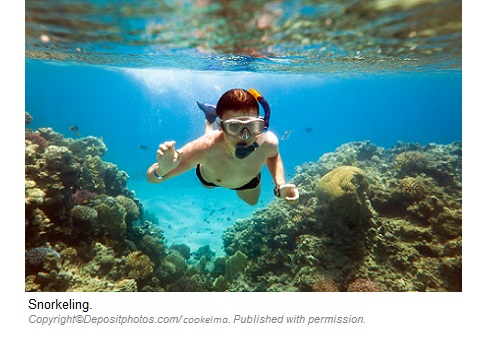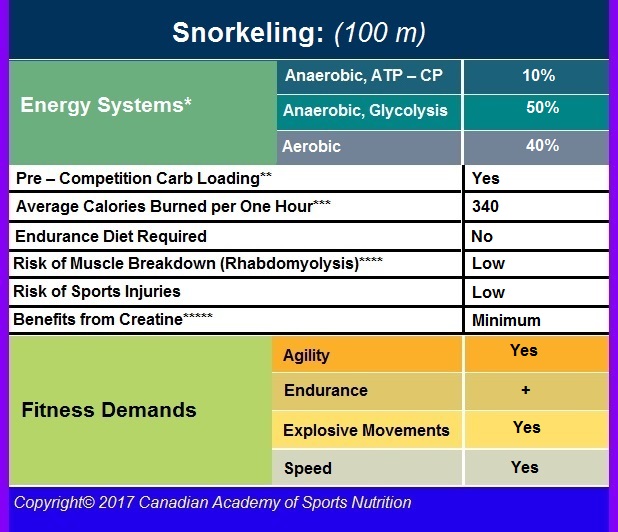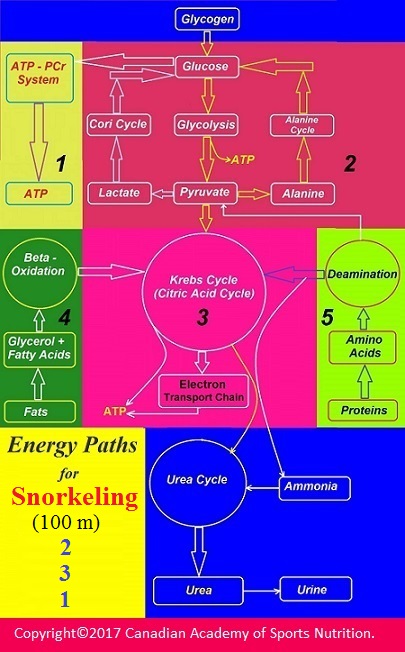It is an underwater activity in which a person swims through the body of water by using a snorkel ( a diving mask equipped with a 40 cm long breathing tube) and swimfins. While one end of the snorkel is in the mouth, the other end sticks out of water, allowing snorkelers to breathe with their faces down in the water.
Snorkeling is a recreational activity than a professional sport. A snorkel may also be used in scuba diving, spear fishing, fin swimming and competitive underwater sports such as underwater hockey and underwater rugby.
Scuba Diving:
It is a form of underwater activity in which a diver uses scuba set to breathe underwater to be able to navigate deep in the water. Scuba is the acronym for self-contained underwater breathing apparatus. A scuba set includes mask, snorkel, air tank, fins, protective diving suit, boots, gloves, pressure gauge, regulator and buoyancy compensator.
Scuba diving could be done recreationally or professionally. Professional scuba diving is done for scientific, military and research purposes. The difference between snorkeling and scuba diving is that a snorkeler swims with a snorkel to enable him to breathe through his mouth while floating underwater near the surface, and a scuba diver goes deep into the water by using scuba set.


*See “Energy Systems” under the section of “Sports Nutrition”.
**See “Carbohydrate Loading” under the section of “Sports Nutrition”.
***Your body weight and body metabolism are important elements affecting the average calories you burn during any physical activities. This is the average amount of calories burned by a person with a body weight of 155 Ibs (70 Kg) within one hour of this sport.
****See “Post – Exercise Rhabdomyolysis” under the section of “Athletic Disorders”.
*****See “Creatine Monohydrate” under the section of “Sports – Performance Enhancers”.
For the “energy paths” of this sport, see the “energy map” below.


